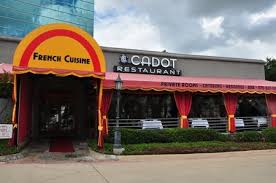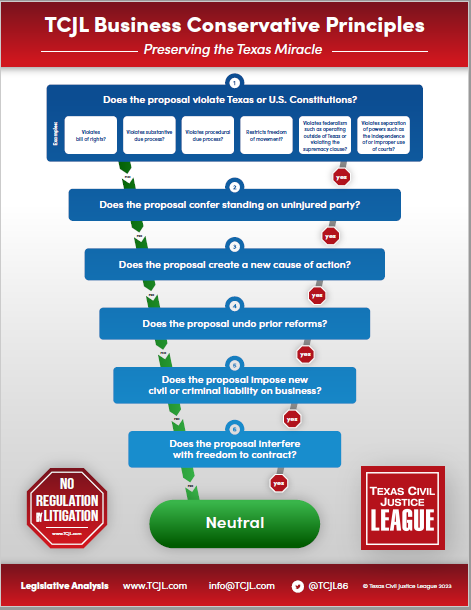 The Texas Supreme Court has reversed a Dallas Court of Appeals decision that overturned a trial court order granting summary judgment to a restaurant under the Texas Dram Shop Act.
The Texas Supreme Court has reversed a Dallas Court of Appeals decision that overturned a trial court order granting summary judgment to a restaurant under the Texas Dram Shop Act.
In a case upon which reported last October, Raoger Corporation v. Barrie Myers (No. 23-0662; April 11, 2025) involved the interpretation and application of § 2.02, Alcoholic Beverages Code, to a 2018 car wreck in which Khan, who had earlier that evening visited a Plano restaurant called Cadot, struck Myers from behind, causing Myers’ vehicle to roll over multiple times. Khan was later arrested for suspicion of driving while intoxicated. The investigating officer got a search warrant for a blood test, which showed Khan’s BAC as 0.139 about three hours after the accident. Myers sued Khan for negligence and negligence per se and Cadot for violations of the Texas Dram Shop Act. Myers alleged that Cadot continued to serve Khan alcohol when it was apparent that he was obviously intoxcated, and that Cadot’s conduct proximately caused Myers’ injuries. Cadot filed no-evidence and traditional summary judgment motions on the basis that Khan never exhibited obvious signs of intoxication while at the restaurant. The trial court granted summary judgment and entered a take nothing judgment for Cadot. Myers appealed.
In an opinion by Justice Partida-Kipness, the court of appeals reversed and remanded to the trial court. In its summary judgment motion, Cadot relied heavily on Khan’s own testimony that he did not feel intoxicated, as well as his companion’s testimony that he acted normally at the restaurant and that she felt no concerns about Khan driving her home. Additionally, the officer who interviewed Khan at the scene of the accident and later at the hospital testified that he did not suspect that Khan was intoxicated at the scene, that his speech and appearance did not indicate intoxication, and that simply smelling alcohol on someone’s breath doesn’t they were intoxicated. The court of appeals, however, observed that the statute “does not require evidence that the provider actually witnessed the intoxicated behavior” (citation omitted). The appropriate test is not whether the provider saw anything, but whether the patron’s conduct was “visible, evident, and easily observed.”
This standard may be satisfied by circumstantial evidence, according to the court, and Myers’ response to the summary judgment motions raised a fact question of whether it was “apparent” to Cadot that Khan was “obviously intoxicated to the extent that he presented a clear danger to himself and others.” The court pointed to other evidence in the depositions of Khan and the police officer, as well as to a bartender at Cadot. Though the bartender didn’t remember Khan at all, she testified that a person of Khan’s size would have to drink eight drinks to have a BAC of 0.139, and that if Khan had had that many, he would have exhibited signs of intoxication. For his part, Khan couldn’t remember how many drinks he had, but he did throw the bartender under the bus by testifying that the bartender should have observed that he was intoxicated (though he told the officer at the scene that he had only drunk two beers). The officer further testified that he didn’t think Khan was intoxicated until he interviewed Khan at the hospital and that “it was possible” Cadot had overserved him. Myers offered the opinion of a toxicologist that Khan had to have consumed 10 to 19 standard drinks in order to have a BAC that high three hours after the accident, contradicting the testimony of both Khan and his companion, who said that Khan had only a beer and three vodka drinks.
The court reasoned that none of this evidence was conclusive, that Cadot’s summary judgment evidence was from interested parties whom the jury might believe were biased, and that Myers presented contradictory evidence, especially the part of Khan’s testimony blaming the bartender for not noticing how obviously intoxicated he was. The court thus concluded that trial court should have denied the summary judgment motions and let the jury sort out the evidence and the credibility of the witnesses. Cadot filed a petition for review, which SCOTX granted.
In an opinion by Justice Boyd, SCOTX reversed and reinstated the trial court’s judgment in favor of Cadot. The first order of business for Justice Boyd was to construe the statutory meaning of “apparent” and “obvious” under § 2.02(b)(1). Giving these terms their ordinary dictionary meaning, he turned to whether Plaintiff presented proof that “the customer was so ‘obviously’ intoxicated as to present a ‘clear danger’ and that this condition was ‘apparent to the provider.’” Based on the record, the answer was a resounding no. By contrast “[i]ndisputably, the record contains substantial evidence that Khan did not appear intoxicated when Cadot served him that night.” Every witness, including Khan’s companion that evening, the bartender at the restaurant, and the police officer who responded to the crash, testified that Khan appeared normal. Only much later at the hospital did Khan’s blood draw indicate signs of intoxication, which were confirmed by an involuntary blood draw after Khan’s arrest. The Court observed that the blood test presented “some evidence” supporting a finding that Khan was intoxicated after the crash, but “this evidence does not support a finding that it was apparent to Cadot that Khan was intoxicated—let alone that he appeared to be so obviously intoxicated as to present a clear danger.”
Plaintiff’s other evidence showing that a person with Khan’s blood alchohol level would have have consumed a sizable number of drinks and must have demonstrated signs of intoxication (slurred speech, abnormal walking, and being loud and obnoxious), but such evidence was based solely on inferences from the blood alcohol test. Consequently, conclusions drawn from the evidence were “speculative” and “conclusory” and not legally sufficient to defeat summary judgment. Although the Court went along with the court of appeals’ assertion that a Dram Shop Act claimant may rely on circumstantial evidence, that “evidence must be linked to other probative evidence of the customer’s apparent condition when the provider served him.” Plaintiff’s circumstantial evidence thus did not “pass muster” in this case. Though Khan’s BAC showed that he drank a lot and was intoxicated at some point in the evening, it didn’t indicate how he appeared to people at the restaurant. “The relevant inquiry,” Justice Boyd wrote, “is the customer’s appearance to the dram shop when he was served—not whether the customer drank an amount of alcohol at the dram shop that mayor should make some people very intoxicated.” And the evidence fell far short of the statutory standard.
The Court further rejected Plaintiff’s argument that the trial court abused its discretion by denying his motion for a continuance to provide more time for discovery in advance of the hearing on Cadot’s MSJ. Observing that Plaintiff had 561 days between the time he joined Cadot in the lawsuit and the hearing on Cadot’s MSJ to depose Cadot’s owner, the trial court “could have appropriately found, in addition to the long length of the case’s pendency, that [Plaintiff] did not exercise ‘due diligence’ in obtaining the discovery.” Plaintiff further failed to show that deposing the owner would produce any new and material evidence.
TCJL filed an amicus brief in support of Cadot, which argued that the court of appeals’ opinion rewrote the statute. Under the court of appeals’ interpretation, statute would mean that it “should have been apparent” to the provider that the claimant obviously intoxicated and presented a clear danger, thus allowing in all manner of post-service speculation and, in effect, gutting the statute altogether. We applaud the Court, as always, for interpreting and applying statutes as written, not as a court wishes they had been written.








